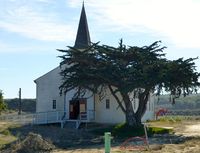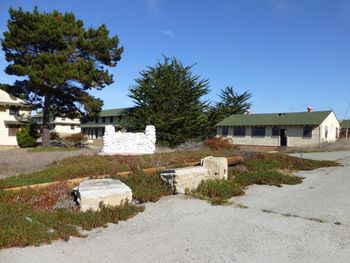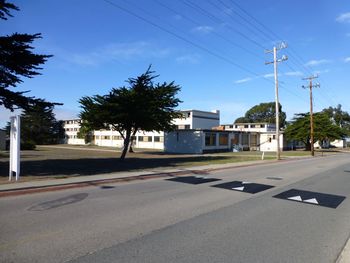Fort Ord
| More information at Warlike, Wikipedia
Fort Ord (1917-1994) - A U.S. Army post established in 1917 as Camp Gigling during World War I on Monterey Bay in Monterey County, California. Renamed Camp Ord in 1939 and Fort Ord in 1940 after Major General Edward O.C. Ord (Cullum 1002), who served in the Second Seminole War and the U.S. Civil War. Fort Ord was Closed in 1994 under the 1991 Base Realignment and Closure (BRAC) legislation. Also known as Camp Clayton.
HistoryThe former Fort Ord Military Reservation came to consist of about 28,000 acres north of Monterey, California. The main post was located along the Pacific Ocean on both sides of U.S. Route 1. A smaller cantonment known as the East Garrison was located on the east side of the reservation along Reservation Road. The original post was established in 1917 when the U.S. Army bought the land for the east garrison and named the reservation Camp Gigling. That post was established to provide a maneuver and training area for units stationed at the Presidio of San Francisco. Improvements were made in the late 1930s that added some permanent structures to the east garrison and it was named Camp Ord in 1939 and re-designated as Fort Ord in 1940. World War II (1941-1945)
 Land for the main post was purchased and some donated in 1938 and that part of the post was built between 1940 and the 1960s. That part of the post was first known as Camp Clayton and then combined with Camp Ord to form Fort Ord. By the end of 1940, Fort Ord had expanded greatly, 1,098 buildings were either finished or underway. About $15 million in contracts had been let for construction at Fort Ord by that time. A 1,500-bed hospital opened in February 1941. During the first half of World War II, Fort Ord was a regional reception center for draftees from the western states. Many of the new inductees went straight to units as they were activated with little or no training. For the second half of World War II, Fort Ord was the west coast replacement and training depot for established units. Like many posts across the country, Fort Ord was selected to hold some of the hoards of German and Italian prisoners of war (POWs). The first German POWs arrived in March 1943 and there was an unsuccessful attempt by some 500 of them to escape by a tunnel in August 1944. The famed Stilwell Hall enlisted club opened on 24 September 1943 as a place to relax for some of the 2 million enlisted troops that passed through Fort Ord. The massive club was a favorite of troops serving during World War II, the Korean War, the Vietnam War, and the Cold War. The club featured a huge ballroom, large fireplaces, leather couches, and purportedly the longest bar in California. The club building was demolished in 2005 because of sand dune erosion that threatened to undermine the structure. Fort Ord continued to provide basic training to new enlistees through the Korean War, the Vietnam War, and the Cold War until 1976, when the training area was deactivated. Fort Ord was closed in 1994 under the 1991 Base Realignment and Closure (BRAC) legislation and the remaining units were relocated to Fort Lewis (1), Washington.
Current StatusFort Ord Military Reservation has been repurposed and in some areas redeveloped. A significant part of the reservation has been redeveloped into the California State University, Monterey Bay. The East Garrison is being turned into private housing. Part of the post has become the Fort Ord National Monument park. A large shopping center has developed along the east side of U.S. 1 at the northern edge of the reservation and the land between U.S. 1 and the Pacific Ocean is now Fort Ord Dunes State Park and Marina State Beach. The beach areas were once firing ranges and ammunition bunkers that can still be seen. At the north end of the beachside was once the famed Stilwell Hall also known as the Soldiers Club which was demolished in 2003. Fort Ord's two golf courses, Bayonet, and Black Horse became public golf courses. Parts of the post are still used by the military. The family housing area is used by the Presidio of Monterey, the Defense Language Institute, and the Naval Postgraduate School. Limited support facilities including a gas station and commissary remain to support the family housing area and the local military posts. A large number of abandoned World War II structures and a smaller number of newer Cold War structures remain. The WWII structures are in deteriorated shape while the Cold War concrete structures are just boarded up. There does not seem to be an organized effort to preserve or display any of the remaining structures in the historic context of Fort Ord.
Sources:
Links:
Visited: 2 Dec 2013 | ||||||






